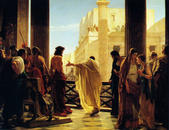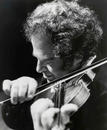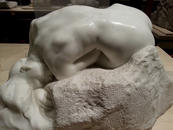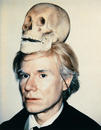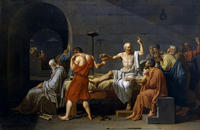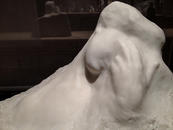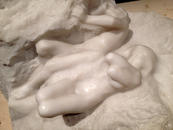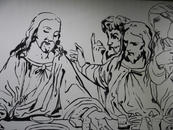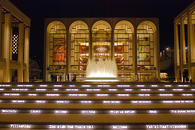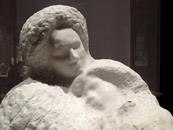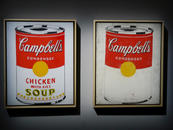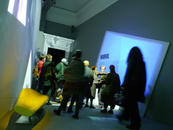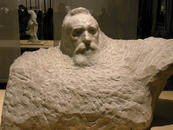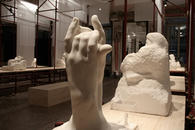Perfection
As we approach the time believed to correspond to the birth of Jesus, I find myself intrigued by my memory of a passage from "No passion spent,” a collection of essays by George Steiner, in which he discusses sacred deaths and births in quite an unusual way. I decided to track down the passage: I remember perfectly the position of the paragraph on the page. Steiner wasn’t the first to say that two deaths mark the course of Western intellectual history, that of Socrates (399 BC) and that of Jesus of Nazareth (33 AD). But he wonders if history would have been different (illuminated by a more stable light), if the decisive events had been two births instead of two deaths. Deaths, followed by two trials and two convictions that determined our heritage. In fact, I am curious, and at the same time doubtful, that the deaths of Socrates and Jesus are still considered milestones; but I don’t have many doubts in stating that these same two deaths have indelibly marked the cultural journey of our ancestors, apart from the secular or religious references that are the building blocks of our different paths of growth. And cultural growth speaks of the impossibility to fully escape the troubling questions that are brought about by this double violence, violence that is expressed in the face of two messages as reasonable as they are "crazy." They are the real provocation of the common feeling, and the commonplace. Socrates would that we were virtuous, truthful, sober and stoic in the face of illness and death. Jesus goes even further: inspired by the total altruism, love and universal compassion, he is open to transcendence. Here Steiner surprisingly states that the crucial link that exists between these two "provocations" is that they both open our ordinary humanity to the "blackmail of perfection." They brutally impose the demands of the ideal upon us; demands that we clearly recognize, but are unable to fulfill. The imitation (Imitatio) proves to be too difficult, unleashing hatred against those who were not able to emulate, hence the two violent deaths, and all that ensued: the readings of convenience, the adjustments, the misrepresentations, up to the uncritical rejection, soft and bland, indistinct and fact of relativism, are typical in times of nihilist crisis.
This "blackmail of perfection,"once understood for its drama, opens up different paths. But I wonder if I ever really understood perfection, or if I know what I'm talking about when using this word today, or based on my limited life experience. The etymology of the word can be traced back to the Latin perfectio, which derives from perfectus, and therefore perficio - "to finish,” or “complete." So “perfection" literally means completion." But what can we mortals can really ever "make" so perfect? It’s really quite simple: the impossibility of perfection derives from our existential insecurity. But I will try to take a couple of steps in the direction of "impossible" perfection, perhaps trying to explore the opposite, through art and life experiences.
The perfection of the uncertain (as an opening)
In terms of this blackmail of perfection, and the artistic way to oppose this blackmail, I thought in the great hall of the Caryatids inside Milan’s Palazzo Reale, in front of the unfinished, fragmentary marble sculptures of Rodin. Then I went back in time to the six prisoners or slaves, carved between 1513 and 1530 by Michelangelo, which obviously inspired Rodin more than three centuries later. There is a direct relationship between Rodin’s work and the "Slave awakening" located in Florence in which a body seems to cling with all its strength to the block of rough marble, the expression of the physical, but also spiritual rebellion against the resistance that opposes the inert matter, as he tries to access life. I always thought, admiring the work, of the metaphor of death as a rebirth, anxious and blind liberation. How much of late Michelangelo is actually modern and timeless! Our lives have become slaves of the fragmentation of contemporary society, seeking escape without faith, certainty or teleology; they seem to want to escape this kind of relativist prison. The unfinished, the fragmentary, are symbols of the painful human condition and become a principle for modern creativity. The transitional nature of the unfinished captures the adequate expression of the zeitgeist of the contemporary world marked by instability. In addition, the figure that emerges from the rough block also seems to crystallize close to its point of origin, to bloom almost from its existential core. A sort of concentric effort, therefore, a Sisyphean task between life and death.
The classical ideal in her command of the rules of (impossible) perfection insisted on “the being" (finished, polished, final), listing canons and rules. Modernity moves on unstable ground of "becoming" rather than “being” (that which changes, which varies, which is movable) but leaves you free, to uncertainty, but also towards opening up.
The other face of the uncertainty, the nihilistic drift
There is another face of modernity in art, much less deep, dramatic and tormented with different bases and references. I happened upon something the same day inside the same location, within walking distance from the Rodin. It’s disconcerting to think that the greatest artist of our time, the pillar that supports what we call contemporary art today, structured its entire intellectual research on the trivial suggestion of a friend: "Paint the thing that you like the most." Being passionate about two things, money and canned soups, Warhol took to painting dollars and canned goods. Bonami defines him as "the brilliant whiteness of Warhol," and I don’t dare to discuss neither the genius nor the whiteness of the rest, both documented by Warhol himself in his diaries, which are the disconcerting confession of a man supremely superficial. So superficial as to subjugate our ego, which feels reconciled (through the hope that global success will happen to us) or rejected (envy, due to the fact that planetary success is not up to us). And this reconciliation or repulsion between implementing our egos to play against him, I believe, makes it impossible to make a judgment about Warhol. Because any criticism made about Warhol can’t be separated from a category that’s hardly ever adopted in its entirety to judge other artists: the category of success. Warhol’s success is no longer one of the many variables in the evaluation of the weight of an artist, becomes the true dividing line. Without success, let's be clear, Warhol would be a loser photocopier with a keen sense of the combination of color and decoration. It gets to the paradox that if you do not appreciate the art of Warhol is because you are either jealous of his success, or you haven’t understood modernity, or you are an unrealistic snob. This was stated explicitly Bonami, with his usual cutting words: "He wasn’t bluffing when he insisted that, to know him, just look at his art or simply at him: everything was there, on the surface, behind there was not nothing. Saying that, due to of these statements, he was an idiot would be risky, because, honestly, no one has proof of it." This, honestly, is an embarrassing statement, even if in keeping with his happy hour style self-deprecating relativism. In a nutshell, I am tempted to say to Bonami: Speak for yourself.
The perfection of the intention (as a remedy)
On November 18, 1995, the violinist Itzhak Perlman was performing at New York City’s Lincoln Center. He walked with crutches because of the polio he suffered as a child. The audience waited patiently as he crossed the stage to get to the chair. He sat down, leaned his crutches to the ground, removed the reinforcements from the legs, he settled in his characteristic pose, one foot bent backwards, the other pushed forward. He bent down to pick up the violin, held it firmly with his chin and gave a nod to the conductor to indicate that it was ready. It was a ritual familiar to Perlman’s fans: the crippled genius that didn’t give importance to his disability in the face of his sublime music transcends everything. But this time something was different. "After the first few bars," recalls the music critic for the Houston Chronicle, "one of the strings on his violin broke. You could hear the crack with a sharp snap - exploded like a pistol shot across the room. There was no mistaking what that sound meant. There was no doubt about what he should do." It was obvious - he had to put down his violin, put his reinforcements back on, take the crutches, stand up, walk backstage scenes and grab another violin or change the string of his violin. But he didn’t. He closed his eyes for a moment, and then signaled the conductor to begin again. Everyone knows that it is impossible to play a symphonic work with just three strings. I know, you know, but that night Itzhak Perlman pretended not to know. He played with such passion and such power and such purity... You could see him recompose the piece in his head. At one point it seemed as if he was intentionally playing the violin in off key to produces sounds from that no one had ever produced before. When he finished there was a silence of awe. Then the audience rose as one. We were all standing up, screaming and cheering - doing everything we could to show how much we appreciated what he had done. He smiled, wiped the sweat from his brow, raised his bow to quiet us, and then said, not with pride but in a humble tone, thoughtful and reverent, "You know, sometimes it is the artist's task to find out how much music one can still create with what’s left."
19/12/2013 Filippo Maglione
Post Scriptum
I thank Damiduck for the description of the crazy evening at Lincoln Center.



